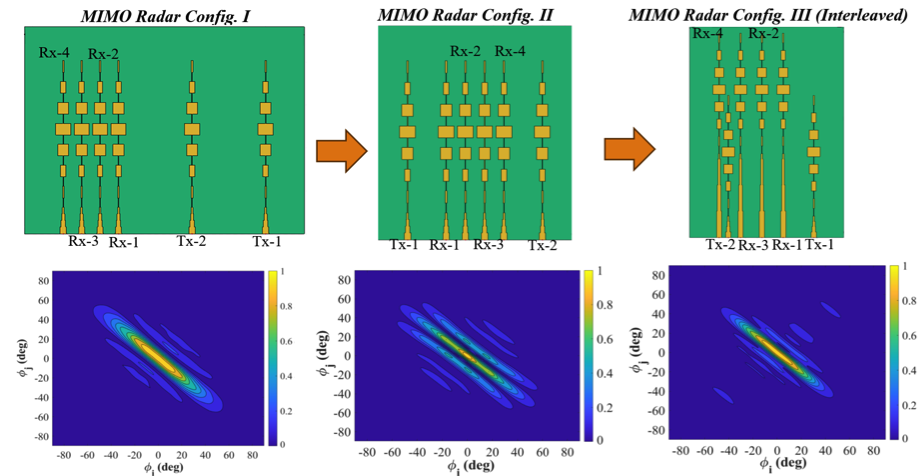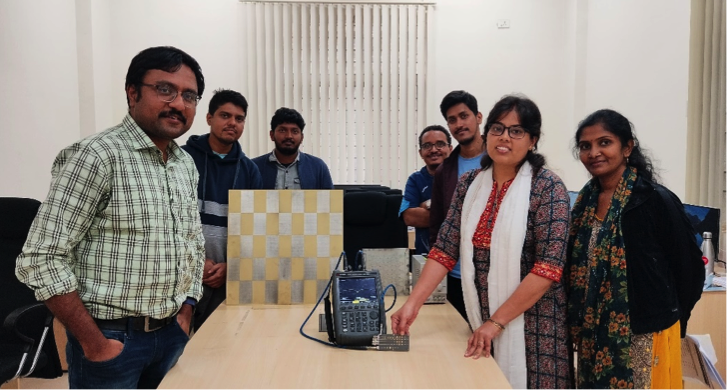Improving the Angular Resolution of Automotive MIMO RADAR using Interleaved Antenna Arrays
Radiolocation systems known as RADAR (Radio Detection and Ranging, coined by the US Navy) were developed secretly for military use by several countries in the period before and during World War II. However, the concept of modern-day RADAR can be traced back to a German patent on “Telemobiloscope” in 1904. After their utilisation in the detection of ships and aircraft by the military, it was inevitable that RADAR systems would find potential application in the civilian automotive regime soon. Automotive RADAR systems, first introduced in the late 1990s, show a steady trend from safety-oriented vehicle functions to comfort (Advanced Driver Assistance System or ADAS). Most of the high-tech, sophisticated, and luxurious automotive industries such as Daimler Mercedes-Benz, BMW, Tesla, and so on are working proactively on future ADAS, driver-less vehicles, or self-driven cars. Co-located MIMO (Multiple-Input Multiple-Output) RADAR is one key component in ADAS, where FMCW (frequency modulated continuous wave) operation is preferred for its hardware simplicity, low-power and three-dimensional (range, velocity, and direction of arrival) detection ability. Due to small electrical size and higher fractional bandwidth of realised antenna arrays, mm-wave frequency bands like W-band (75-77 GHz) and K-band (24 GHz) are favoured in MIMO RADAR, respectively for short-range and long-range applications. In addition, BT-SFP (binomially tapered series fed patch) antennas exhibiting low SLL (side lobe level) and wide FOV (field of view) emerge a popular choice as the radiating element in such automotive MIMO RADAR systems.
In new work, the team comprising of Ananya Mukherjee (SERB National Post-Doctoral Fellow) and Debdeep Sarkar (Assistant Professor) in the Department of ECE, IISc, unravels the importance of element positioning in the improvement of angular resolution for a BT-SFP antenna-based MIMO RADAR configuration operating at 76 GHz. This study demonstrates that a single-layered interleaved MIMO RADAR topology yields the smallest angular resolution by enhancing the ambiguity-free virtual array aperture, while maintaining high inter-element isolation and compact array footprint. To validate the proposed concept, a scaled MIMO RADAR antenna prototype at 24 GHz band has been developed and tested in terms of its scattering parameters and element radiation patterns.

Caption: Evolution of various co-located 2 Tx-4 Rx MIMO Radar (Tx=transmit antenna, Rx=receive antenna) configurations with the corresponding ambiguity functions. The interleaved topology demonstrates improved angular resolution within a compact footprint, without compromising the impedance matching, mutual coupling, and element radiation pattern performance.

Members of iDARE, ECE, IISc with the MIMO RADAR antenna prototype at 24 GHz and Network Analyser: from left to right, Debdeep Sarkar (Assistant Professor), Alok Chandra Joshi (PhD Student), Malleboina Raju (PhD Student), Atli Lemma (PhD Student), Yugesh Chandrakapure (JRF), Ananya Mukherjee (SERB NPDF and lead author of this paper) and Bhagyalakshmi HV (Admin Assistant).
REFERENCE:
Mukherjee A, Sarkar D, Compact MIMO Radar of Improved Angular Resolution using Interleaved Array Geometry, IEEE Transactions on Vehicular Technology (2023).
doi: 10.1109/TVT.2023.3337800
LAB WEBSITE: https://ece.iisc.ac.in/~debdeeps/



